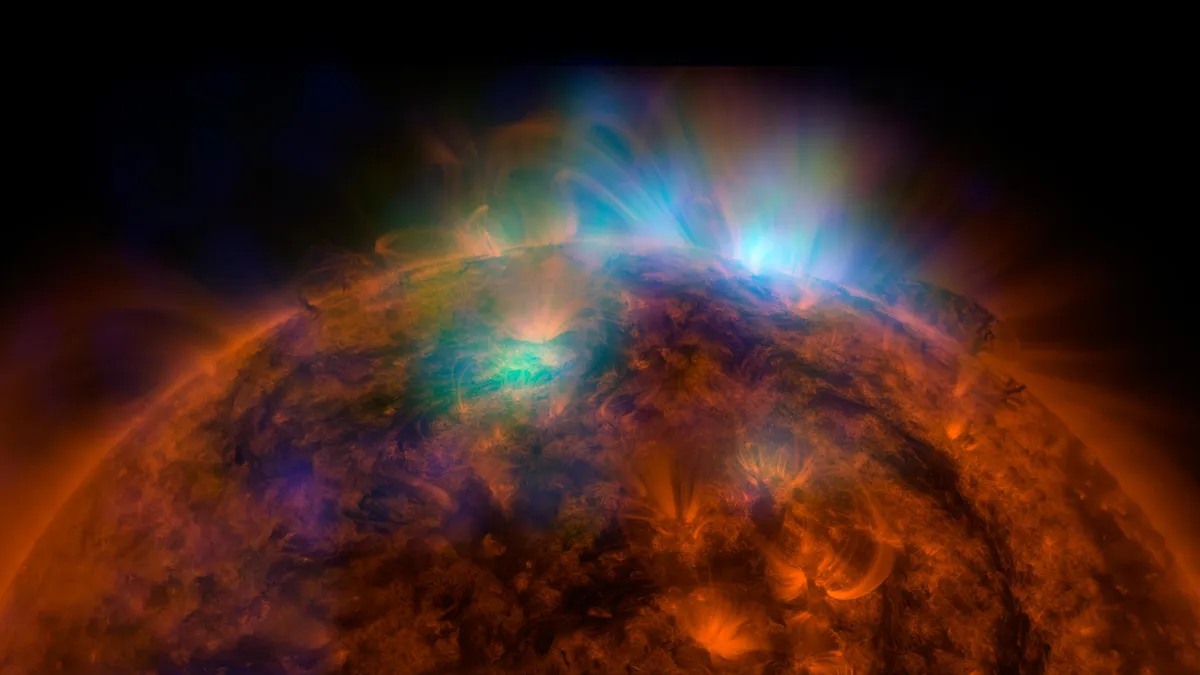Since its discovery, dark matter has continued to elude scientists, even after many experiments with ultra-sensitive particle detectors have been deployed around the world over the decades.
Now, physicists at the Department of Energy’s (DOE) SLAC National Accelerator Laboratory are proposing a new way to search for dark matter by using naturally tunable quantum devices to detect what researchers call thermalized dark matter.
SLAC physicist Rebecca Lin, author of the new study, said most dark matter experiments look for galactic dark matter that comes directly to Earth from space, but another type may have been hanging around Earth for years.
By bringing it into what scientists call a thermalized equilibrium, “Dark matter hits the Earth, bounces around a lot, and ends up getting trapped in the Earth’s gravitational field,” Lin said. Over time, this thermalized dark matter accumulates to a higher density than a few free galactic particles, meaning they are more likely to hit the detector. Unfortunately, thermalized dark matter moves much slower than galactic dark matter, which means it will conduct much less energy than galactic dark matter; which would likely transmit too little energy for conventional detectors.
Possibilities of quantum sensing
With this in mind, Lin and SLAC postdoctoral researcher Anirban Das turned to Noah Kurinsky, a SLAC staff scientist and head of a new lab focused on detecting dark matter with quantum sensors, who was pondering a puzzle: Even when superconductors are cooled to absolute zero, the entire system Once energy and a stable quantum state are created, the energy somehow comes back and destroys the quantum state.
Kurinski said scientists generally assume this is caused by faulty cooling systems or some type of heat source in the environment. But there could also be another reason, he said: “What if we actually have a perfectly cold system, and the reason we can’t cool it effectively is because it’s constantly bombarded by dark matter?”
Das, Kurinsky, and Lin wondered whether superconducting quantum devices could be repurposed as thermal dark matter detectors. According to their calculations, the minimum energy required to activate the quantum sensor is low enough (about a thousandth of an electron volt) to detect low-energy galactic dark matter as well as thermalized dark matter particles suspended around the Earth.
Of course, this does not mean that dark matter is responsible for the degradation of quantum devices; It just means it’s possible. The next step, Lin and Kurinsky said, will be to find out if and how they can turn sensitive quantum devices into dark matter detectors.
However, there are a few things to consider. For starters, it might be a better material to make the device from. “We initially looked at aluminum, and that’s because it’s probably the best-characterized material ever used for detectors,” Lin said. “But it may turn out that there may be a better material for the mass range we’re looking at and the type of detector we want to use.”
Just as galactic dark matter is suspected to interact directly with detection devices, there is a possibility that thermalized dark matter would not interact with a quantum device, Lin said. “In this work, we were thinking about the simple case where dark matter comes in and reflects directly off the detector, but it can also do many other things.” For example, other particles can interact with dark matter, which changes the way the particles are distributed in the detector.
“This is one of the best things about working at SLAC,” says Lin. “We have really diverse groups working in many different disciplines, and I think this project is a really good research synergy at SLAC.”
Source: Port Altele
